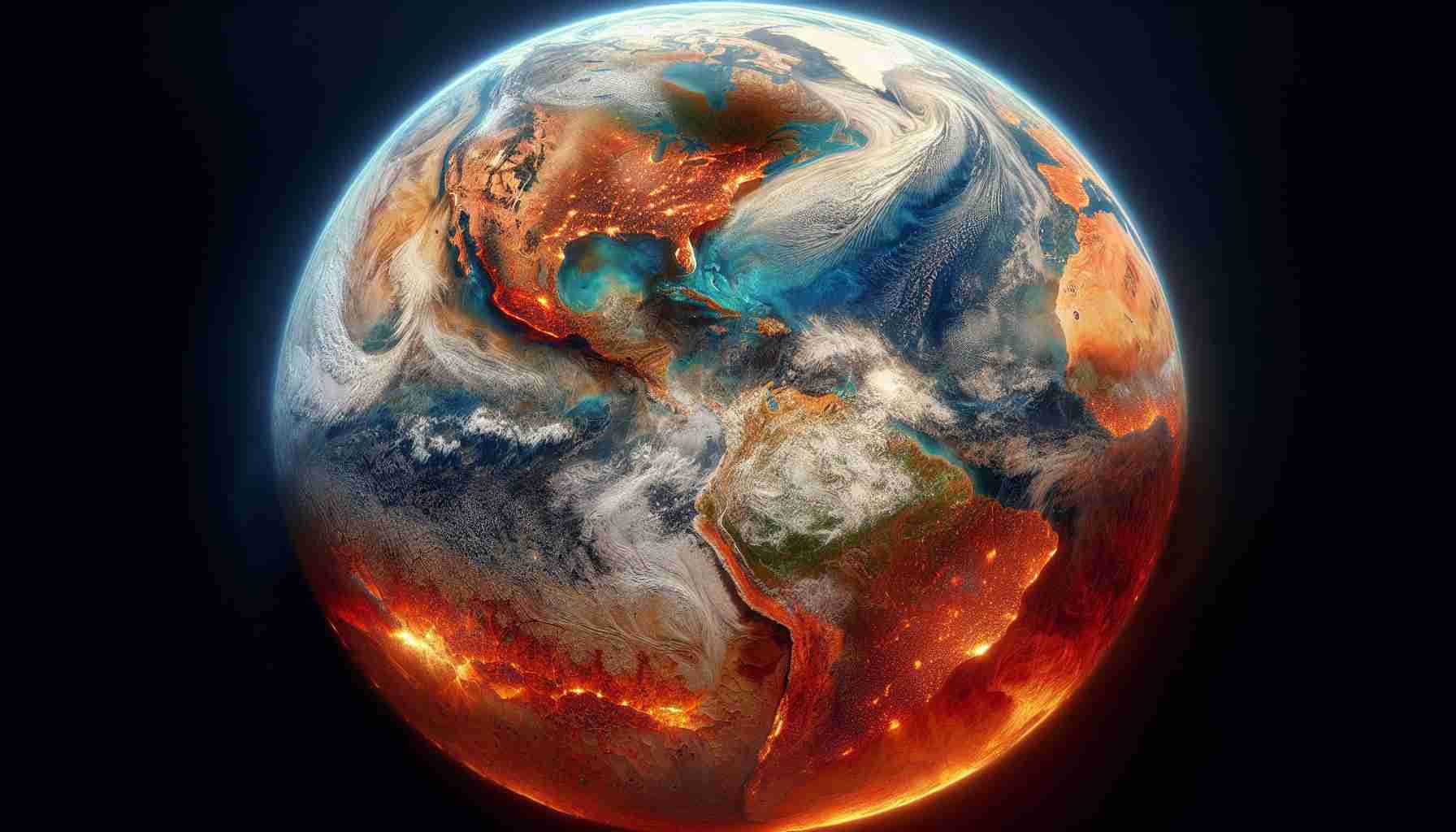2024 has been marked as the hottest year Earth has ever recorded, leaving behind a series of catastrophic tales of human suffering and environmental devastation. The relentless heat wave has pushed the limits of what many regions can endure, highlighting the urgent need for climate action.
In Phoenix, Arizona, the city faced a staggering 113 consecutive days of temperatures exceeding 100° Fahrenheit. This extreme weather resulted in a tragic spike in heat-related fatalities. As if that wasn’t enough, cities like Mexico City were burdened with drought and crippling blackouts, leading to fears of a catastrophic water shortage.
Across the globe, São Paulo reported alarming air pollution levels linked to wildfires fueled by the intense heat and drought. During a separate heat wave, Rio de Janeiro recorded a staggering heat index of 144.1° F, showcasing the extremity of the conditions people were forced to endure.
In the Philippines, a devastating 15-day heat wave resulted in severe water shortages, crop failures, and school closures, while Paris experienced dangerously high temperatures during the Olympics, a stark reminder of the continent’s rapid warming.
These incidents reflect a broader crisis spanning multiple continents, from record-breaking highs in Longyearbyen to severe heat-related health crises in Bamako and Gaza. The alarming increase in temperatures is not merely a statistic; it is an urgent call to recognize the severe effects of climate change on human lives and the environment.
2024: The Year of Unprecedented Climate Extremes
The Intensifying Climate Crisis
The year 2024 is shaping up to be a crucial turning point in the global understanding of climate change, as it is now confirmed to be the hottest year on record. This has triggered a cascade of devastating incidents that underline the urgent need for comprehensive climate action and innovation in environmental policies. The severe weather patterns experienced across the globe are not isolated events; they are part of a larger trend that highlights the fragility of our planet’s ecosystems.
Key Global Impact Zones
Across different regions, the effects of extreme heat have been felt acutely:
1. Phoenix, Arizona: The city endured an extraordinary 113 consecutive days with temperatures over 100°F. The public health repercussions have been severe, leading to increased emergency room visits and a notable rise in mortality rates attributed to the heat.
2. Mexico City: This metropolis faced an unprecedented drought coupled with rolling blackouts. The water shortage has raised alarms about future sustainability and access to clean drinking water for millions.
3. São Paulo and Rio de Janeiro: These Brazilian cities have battled worsening air quality due to rampant wildfires exacerbated by the extreme weather conditions. Rio de Janeiro’s recorded heat index reached an alarming 144.1°F, pushing residents to their limits and highlighting the urgent need for climate resilience strategies.
4. The Philippines: There was a profound impact on agriculture and education, with a 15-day heat wave resulting in severe crop failures. Schools were forced to close, affecting the education of thousands of children during a critical period.
5. Europe: Paris faced dangerously high temperatures during the Olympic Games, prompting discussions around climate preparedness for large-scale events. The stark reality of climate effects now places pressure on major cities to develop better contingency plans for high-temperature events.
The Bigger Picture
The rise in average global temperatures echoes broader climate trends observed in regions as diverse as Longyearbyen in the Arctic, where climate models predict continued warming, and urban areas like Bamako and Gaza, which are experiencing major health crises due to prolonged heat exposure.
Insights and Innovations in Climate Action
– Renewable Energy Adoption: The increase in extreme weather conditions has intensified the push for renewable energy sources. Solar and wind energy have become critical in reducing our reliance on fossil fuels, particularly in nations hardest hit by heat waves.
– Urban Planning and Green Spaces: As cities like Phoenix struggle to adapt, innovative urban planning is gaining traction. Cities are investing in green roofs, more trees, and parks to mitigate the heat island effect and improve air quality.
– Water Resilience Strategies: Regions facing water shortages are adopting advanced water management techniques, including rainwater harvesting and desalination projects, to enhance their resilience against drought conditions.
Limitations and Challenges Ahead
Despite the advancements in technology and policy, challenges remain. Political resistance, funding shortages, and public awareness are major barriers to implementing effective climate action strategies globally. Additionally, the rapid pace of climate change has outstripped traditional response models, necessitating an innovative and agile approach to climate issues.
Future Predictions and Trends
Looking ahead, climate scientists predict continued increases in global temperatures, with heat waves becoming more frequent and severe. Public awareness campaigns and educational initiatives are vital to mobilizing grassroots movements that demand action on climate policy.
Individuals, businesses, and governments must work collaboratively to create a unified front against climate change. The need for sustainability and climate resilience is more urgent than ever as we collectively face the daunting realities of living in a warming world.
For more insights on environmental changes and responses, visit Climate.gov.
